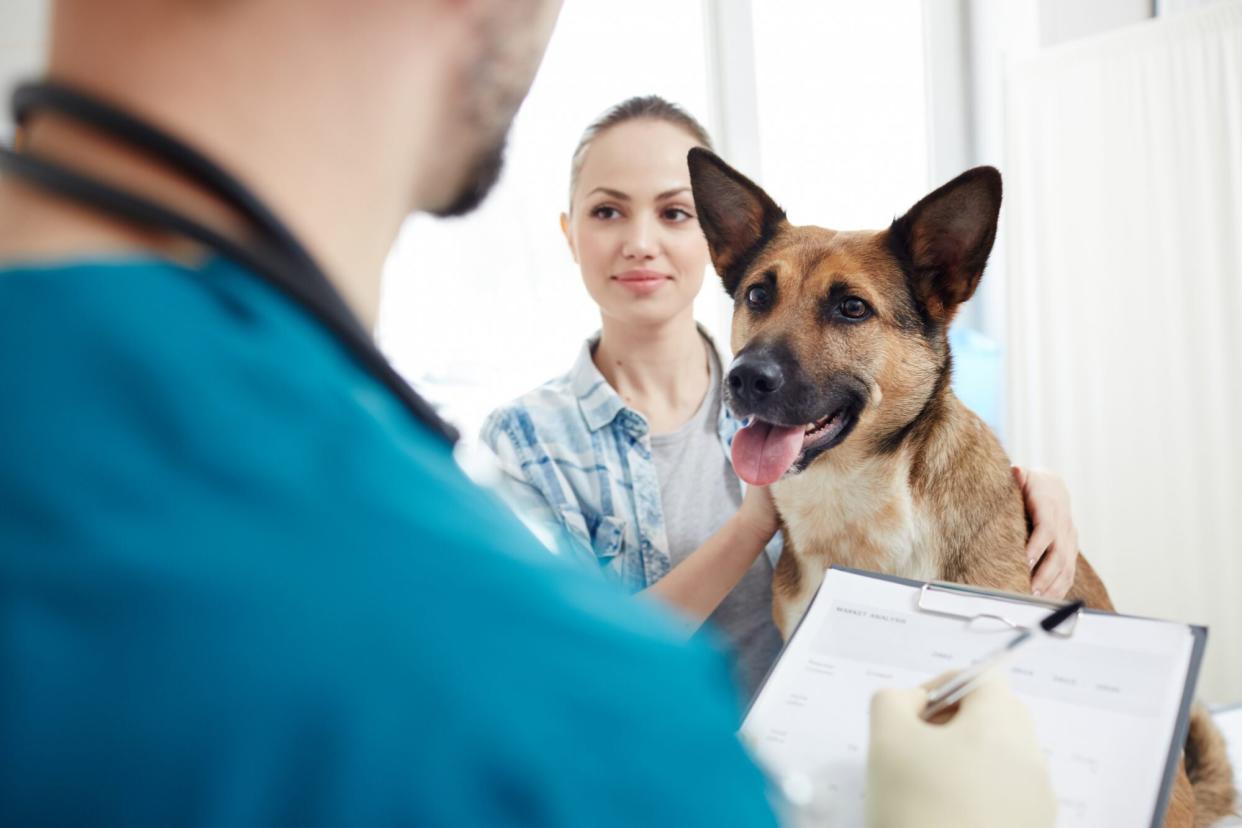Here's How to Update Your Pet's Microchip Information

shironosov / Getty Images
In addition to regular check-ups at the veterinarian and annual vaccinations, you should always ensure that your pet's microchip information is up to date. "Microchipping is a good idea for all pets, even those who are strictly indoors such as indoor cats," explains Dr. Stephanie Sheen, DVM, a Fuzzy veterinarian. "Although we may think our pets would never get out of our house, yard, kennel, and so on, those things do happen, even to the most well-meaning and careful of us." This is why you should keep your microchip information updated. If your information is old or incorrect, it could delay the reunion.
"It can be a very helpless feeling when your pet is lost," adds Dr. Sheen. "Microchips are a way to make sure if your pet is found that it can get back to you as soon as possible." Here's how to check your pet's microchip and update its information in the event of a move or change in residence.
Related: What Are Some Ways to Help My Older Dog Be More Active?

shironosov / Getty Images
How Microchips Are Used
First, it's important to understand how they work: "When your pet's microchip is placed, the veterinarian will provide the number of the chip and the company information of who made the chip. If you adopted your pet from a shelter, that information should be with your adoption paperwork," explains Dr. Sheen.
The procedure is quick and mostly painless. It may feel like getting their blood drawn or a vaccine does for the animal. "Microchips are placed using a syringe-like device with a hollow needle at one end and a plunger on the other," explains Dr. Sheen. "The needle is inserted just under the skin, usually between the shoulder blades and the plunger is pressed to eject the microchip. The syringe is then removed, leaving the microchip behind."
"This procedure can be done with your pet awake or when under anesthesia (usually for some other reason—we do not typically use anesthesia just for this procedure)," says Dr. Sheen. "The needle is a bit larger to accommodate the size of the chip (just a little larger than a grain of rice) so it can be uncomfortable briefly on the initial poke depending on the size of your dog and its sensitivity to pain. Some veterinarians will apply a small dab of topical anesthetic to the area and allow it to sit to numb the skin before insertion." Once the microchip is inserted, the technician will scan the microchip to make sure it was inserted correctly and can be scanned. Next, you will fill out paperwork to register the microchip and then you're done—until you need to update your information.
Visiting the Registry's Site
There are several registries where people can enroll their microchips and add their pets to the database: Michelson Found Animals, PetLink, AKC Reunite, HomeAgain, and more. Go to the registry's website and either log in to update your information or call the registry. Many of the registries let you set up an online account.
However, even if you don't know the name of your microchip registry, all is not lost: A vet can scan your pet's microchip with a chip reader to find out which registry was used for the microchip; this is usually done for free. "Sometimes, the reader will have the information of the manufacturer of the chip immediately when scanned," says Dr. Sheen. "If it does not, you can find this information yourself on the AAHA Universal Pet Microchip Lookup where you enter your pet's microchip number, and it will tell you the manufacturer. You can then look online for contact information for that company to call and update your information."
"There are other registries that exist that are universal, meaning you can register any brand of microchip, which may be a good add-on option. Some are free and some charge fees. A good, free option is the nonprofit Michelson's Found Animal Registry," says Dr. Sheen. "However, keeping your information up to date with the original company is preferred at this time as there is no established universal database, and the original company is likely the first point of contact for a vet office or shelter looking to reunite a lost pet with their pet parent."

